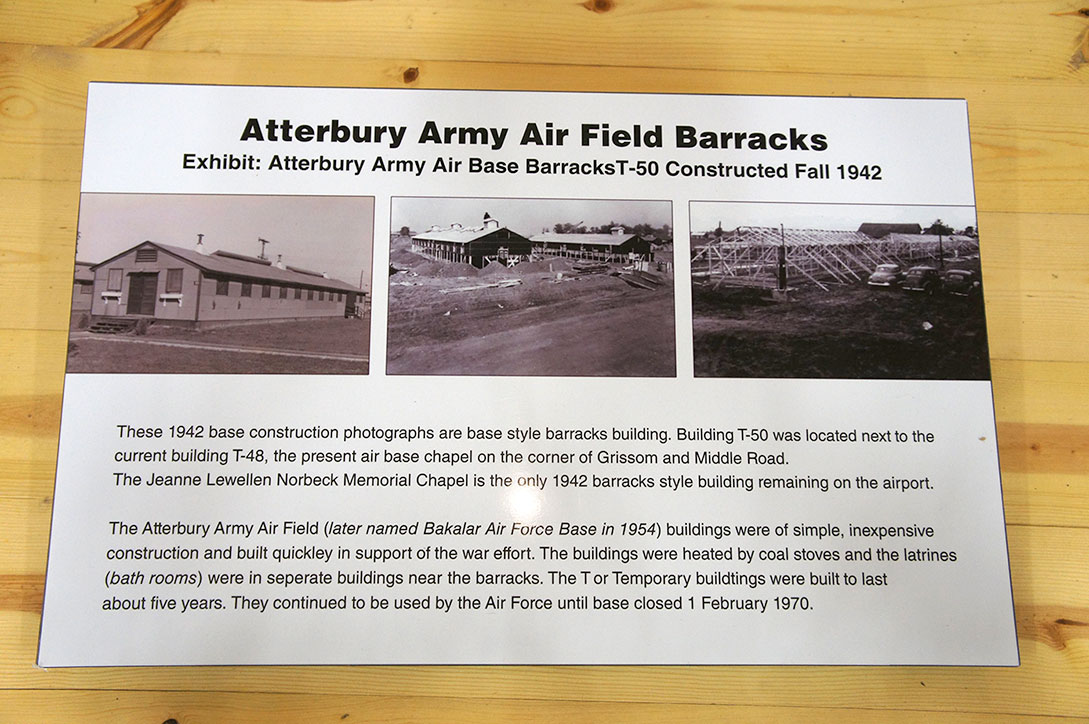the atterbury barracks display
The Atterbury Army Air Field (later named Bakalar Air Force Base in 1954) buildings were of simple, inexpensive construction and built quickly in support of the war effort. The buildings were heated by coal stoves and the latrines (bath rooms) were in separate buildings near the barracks. The Tor Temporary buildings were built to last about five years. They continued to be used by the Air Force until the base closed on February 1, 1970.



